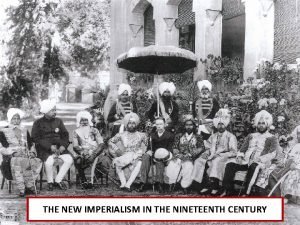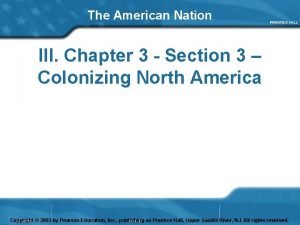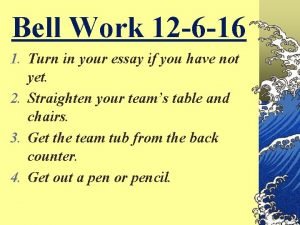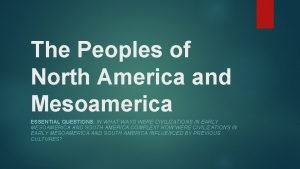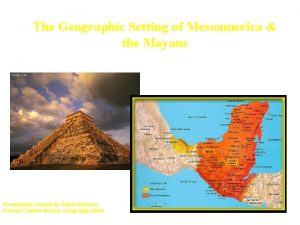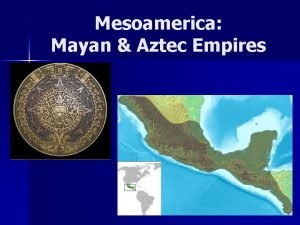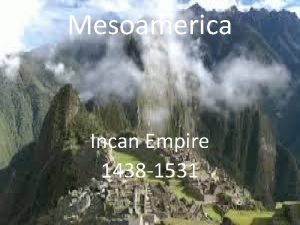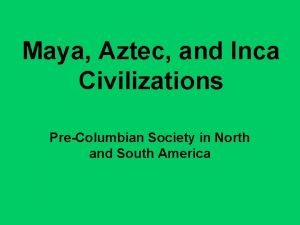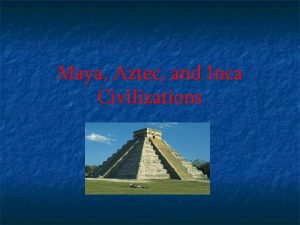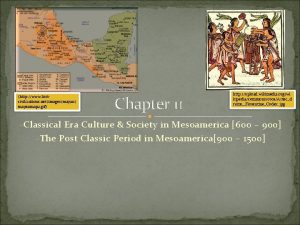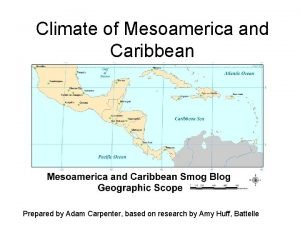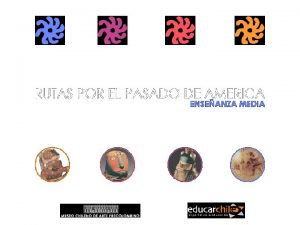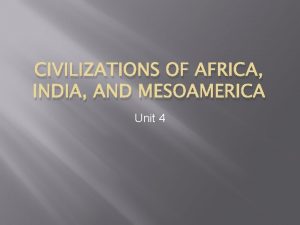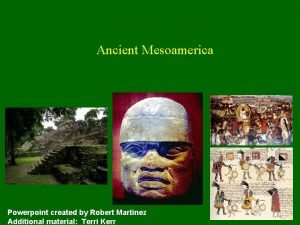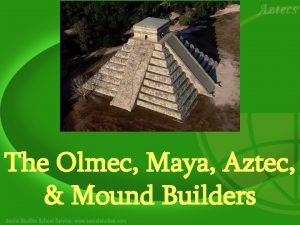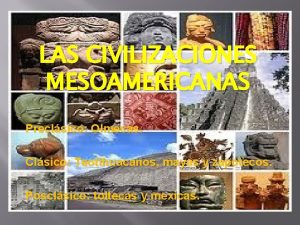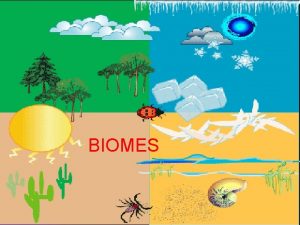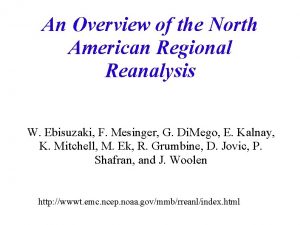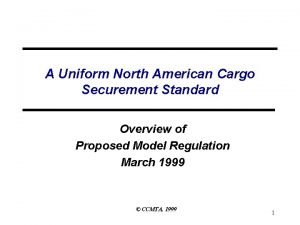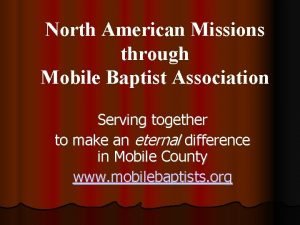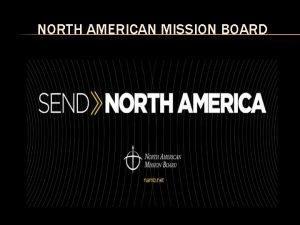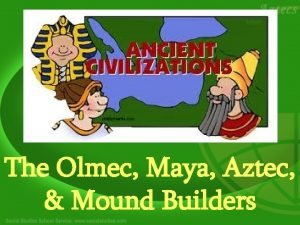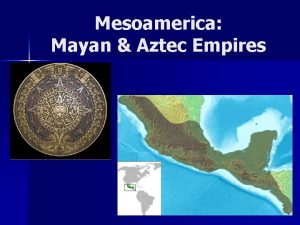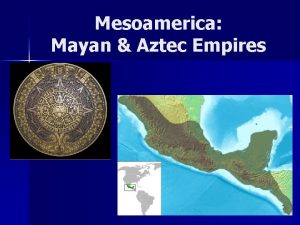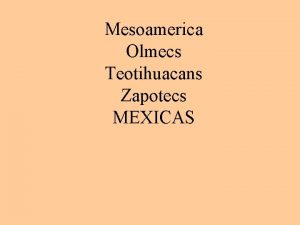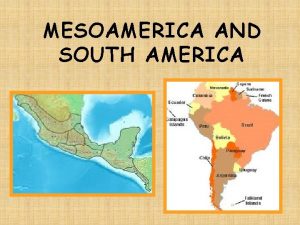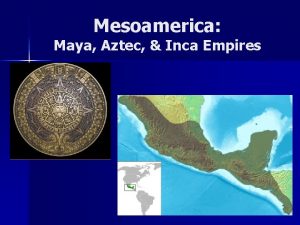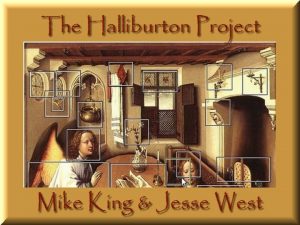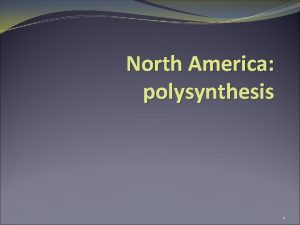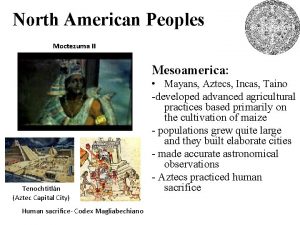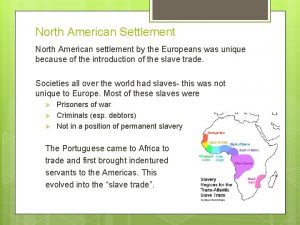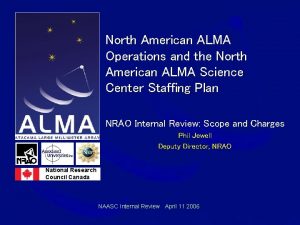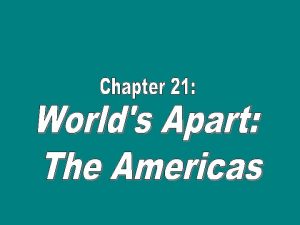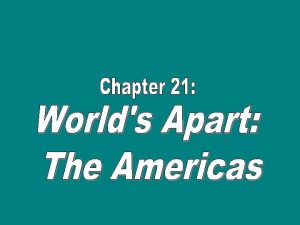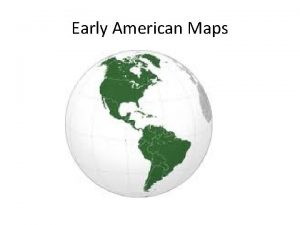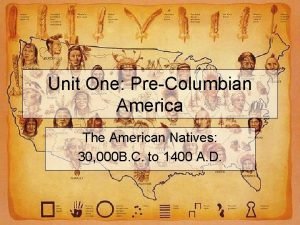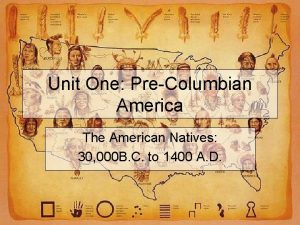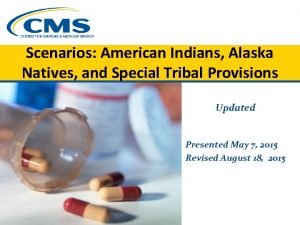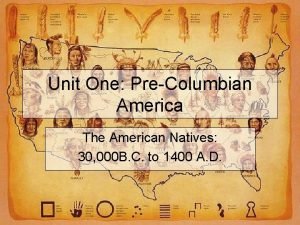Mesoamerica North American Natives 7 54 Explain the
































- Slides: 32

Mesoamerica & North American Natives 7. 54 Explain the impact of geographic features on American Indian cultures, (i. e. Northeast, Southeast, & Plains), including: clothing, housing, & agriculture. 7. 55 Describe the existence of diverse networks of North American Indian cultures (within present-day United States), including: varied languages, customs, & economic & political structures.

Olmecs & Jade, Obsidian & Pyramids

Olmec Stone Heads

Olmec Where did they live? along the Gulf of Mexico between the Yucatan Peninsula & Plateau of Mexico How did they live? Farming & trade communities What did they do? Farmers of beans, produced salt, traded for jade & obsidian, made jewelry from jade& knives from obsidian, made pyramids & stone monuments for religious ceremonies

Hohokam & Anasazi

Southwest

Hohokam, Anasazi, Hopi, Acoma, Zuni, Apache, & Navajo Where did they live? Southwest How did they live? What did they do? Farming with irrigation, lived in pueblos, homes in the walls of steep cliffs, adobe homes of sun-dried mud bricks, Navajo settled in villages of square wooden homes, hogans Dug irrigation canals & gathered water from cliffs, farmed corn, cotton, beans, squash, & melons, made pottery, carved stone, etched shells, traded with Mesoamerica, A&N hunters & gatherers, Navajo became farmers

Moundbuilders & Mississippians

Moundbuilders & Mississippians Where did they live? East of the Mississippi River & Mississippi River Valley How did they live? Hunters & gatherers who transitioned to farming & lived in cities ex Cahokia What did they do? Built mounds for tombs and ceremonies, farmers of sunflowers, gourds, barley, corn, squash, & beans

Inuit

Inuit Where did they live? Far North America How did they live? What did they do? Dogsleds on land & seal-skin Skilled hunters of seals, kayaks at sea, homes of stone walruses, caribou, polar & blocks of earth, igloos as bears, & whales temporary homes

Pacific Northwest

Tlingit, Haida, Chinook, Chumash, Cahuilla, Pomo Where did they live? Pacific Northwest How did they live? What did they do? Wooden houses & canoes of Hunted for otters, seals, cedar whales, & salmon

Great Plains

Mandan, Pawnee, & Hidatsa Where did they live? Great Plains How did they live? Nomads, set up villages for farming 1 or 2 growing seasons, tepees What did they do? Planted gardens along rivers, grew beans, corn & squash, men hunted by driving herds of antelope, deer, & buffalo over cliffs

Eastern Woodlands

Iroquois, Huron, Hopewell, Algonquin, Cherokee, Creek, & Natchez Where did they live? Eastern Woodlands How did they live? What did they do? Complex societies, hunted in Farmers of corn, beans, & north farmed in south squash, Hunted deer, rabbits, bear, & beaver, Iroquois Confederacy 1 st constitution in what is now the U. S.

Chickasaw �Settled in West & Middle Tennessee plus parts of Alabama & Mississippi �Lived along streams & rivers �Economy based on fishing , hunting, gathering, & farming

Cherokee �Settled in East Tennessee plus parts of Georgia & North & South Carolina �Made pottery, wove baskets & hunted deer, bear, & elk for food & clothing �Organized into a confederacy with supreme war chief & supreme peace chief in charge of different towns

Maya, Aztec, & Inca 7. 56 Explain the impact of the geographical features & climate on the agricultural practices & settlement of the Maya, Aztec, & Incan civilizations. 7. 57 Describe the social, economic, & political characteristics of the Maya, Aztec, & Incan civilizations, including: oral traditions, class structures, religious beliefs, slavery, & advancements (e. g. , astronomy, mathematics, & calendar).

Maya Social Structure -Class system -Kings (god-kings)-sometimes Queens -Nobles & Priests -Farmers, Artisans, & Hunters -Captives- often sacrificed to gods Political System -50 independent city-states -Marriage of nobles from other city-states to form alliances & help trade -Kings & Queens ruled (Monarchy) each city-state -Nobles and priests helped rule -Government directed building projects & farming

Maya Roles of Citizens Family Life Religious Beliefs & Practices -To serve the king -Pay taxes -Worked on large building projects -Priests, Farmers, Artists, & Hunters -Farmers-erosion & overuse of soil may have caused decline of civilization -Government directed building projects & farming -Women & men were pretty equal -Polytheistic -Kings were considered descendants of the sun god -Sacrifice captives to rain god during droughts -Priests-believed gods revealed plans via sun, moon, & stars -gods in control of everything on earth -260 day calendar for religious events -Ceremonies to please the gods

Maya Customs & Traditions Warfare & Slavery Scientific Achievements -Human sacrifice -Nobles married nobles from other city-states to help trade & alliances -Royal birth called for a musical celebration -Fought for land captives -May have brought an end to the city-states -Captives became human sacrifices -260 day calendar for religious events -365 day calendar for seasons and agriculture -Astronomy could predict eclipses -Math count by 20 and concept of zero -Hieroglyphics-written language

Mayan Hieroglyphics

Aztec Social Structure -Kings/emperors at the top -4 class system -Nobles -Commoners -Unskilled workers -Enslaved people Political System -Council of priests, nobles, & warriors to select a skilled leader in warfare to become king/emperor -Monarchy -After expansion, partly independent territories governed by local leaders -Kings/emperors descended from gods

Aztec Roles of Citizens -Most Aztecs were commoners: farmers, artisans, or merchants -Priests important because of sacrifices of captives to please the gods -Council selected new king/emperor -Priests worked to preserve religion, history, & literature -Early Aztecs warriors & hunters Family Life -Boys taught to be warriors -Girls taught to weave cloth, work at home, prepare for motherhood -Men & women not equal but women can own & inherit property Religious -Polytheistic Beliefs & Practices -Kings descendants of gods -Believed sun god had promised them a home -260 day calendar for religious events -Sacrificed captives who would be rewarded in the afterlife

Aztec Customs & Traditions Warfare & Slavery Scientific Achievements -Human sacrifice -Slaves -Training of Boys for war & selection of warrior king shows importance of war in society -260 day calendar for religious events -365 day calendar for everyday use & time to plant & harvest -Tenochtitlán built in the middle of the lake, largest city in Mesoamerica -Floating gardens & dams -Irrigation & fertilization of farmland & aqueducts - Hieroglyphics-written language (not as advanced as Maya)

Aztecs Tenochtitlan

Inca Social Structure -Emperors with divine protection -Head priest & commander of the army -Regional leaders of the army -Temple priests, local army commanders, skilled workers -Farmers, herders, & ordinary soldiers Political System -Strong central government -Tax bureau, legal courts, military posts, & government offices -Largest empire in the Americas -Largest & best army -Government collected food during good harvests & distributed it during bad harvests

Inca Roles of Citizens Family Life Religious Beliefs & Practices -People had to work for government for several weeks a year -Government required people to learn Quechua (Incan language) -Work on road systems -Skilled engineers -Farmers grow potatoes & quinoa -Males had to fight in army -Inca citizens controlled by rulers -All young men required to serve in the army -Polytheistic -Child sacrifice an honor to the family -Built large stone structures to please their gods -Believed rulers had protection of the sun god, Inti

Inca Customs & Traditions Warfare & Slavery Scientific Achievements -Rarely made human sacrifices -Controlled lives of conquered people -No writing system, wheels, or iron tools -Fought for fertile land in the Andes -Empire built on war -Quipu counting & record keeping rope -Terrace farming -Machu Picchu -Stones packed tightly so no mortar needed -Road system -Irrigation System & fertilizers -panpipe, a musical instrument -could freeze dry food

Incan Terrace Farming
 Natives of new zealand
Natives of new zealand Jacques cartier
Jacques cartier The natives
The natives Chapter 14 pre columbian america answers
Chapter 14 pre columbian america answers The peoples of north america and mesoamerica
The peoples of north america and mesoamerica True north vs magnetic north
True north vs magnetic north North east and cumbria ics
North east and cumbria ics Chapter 14 lesson 2 north and south
Chapter 14 lesson 2 north and south The north pole ____ a latitude of 90 degrees north
The north pole ____ a latitude of 90 degrees north Geography of mesoamerica
Geography of mesoamerica Aztec social structure
Aztec social structure Terrace farming mesoamerica
Terrace farming mesoamerica Mesoamerica inca
Mesoamerica inca Mesoamerica inca
Mesoamerica inca Mesoamerica inca
Mesoamerica inca Mesoamerican society
Mesoamerican society Pisos ecológicos
Pisos ecológicos Climate of mesoamerica
Climate of mesoamerica Mesoamerica culturas
Mesoamerica culturas Arquitectura precolombina de honduras
Arquitectura precolombina de honduras Civilizations of mesoamerica
Civilizations of mesoamerica Mesoamerica powerpoint
Mesoamerica powerpoint Mesoamerica vocabulary
Mesoamerica vocabulary Periodo clásico los teotihuacanos, mayas y zapotecos
Periodo clásico los teotihuacanos, mayas y zapotecos Why are cold fronts steeper than warm fronts
Why are cold fronts steeper than warm fronts Biomes of north america
Biomes of north america North american regional reanalysis
North american regional reanalysis North american air masses
North american air masses North america cargo securement standard course
North america cargo securement standard course North american gaming regulators association
North american gaming regulators association North american association for environmental education
North american association for environmental education Association of north american missions
Association of north american missions Namb
Namb
